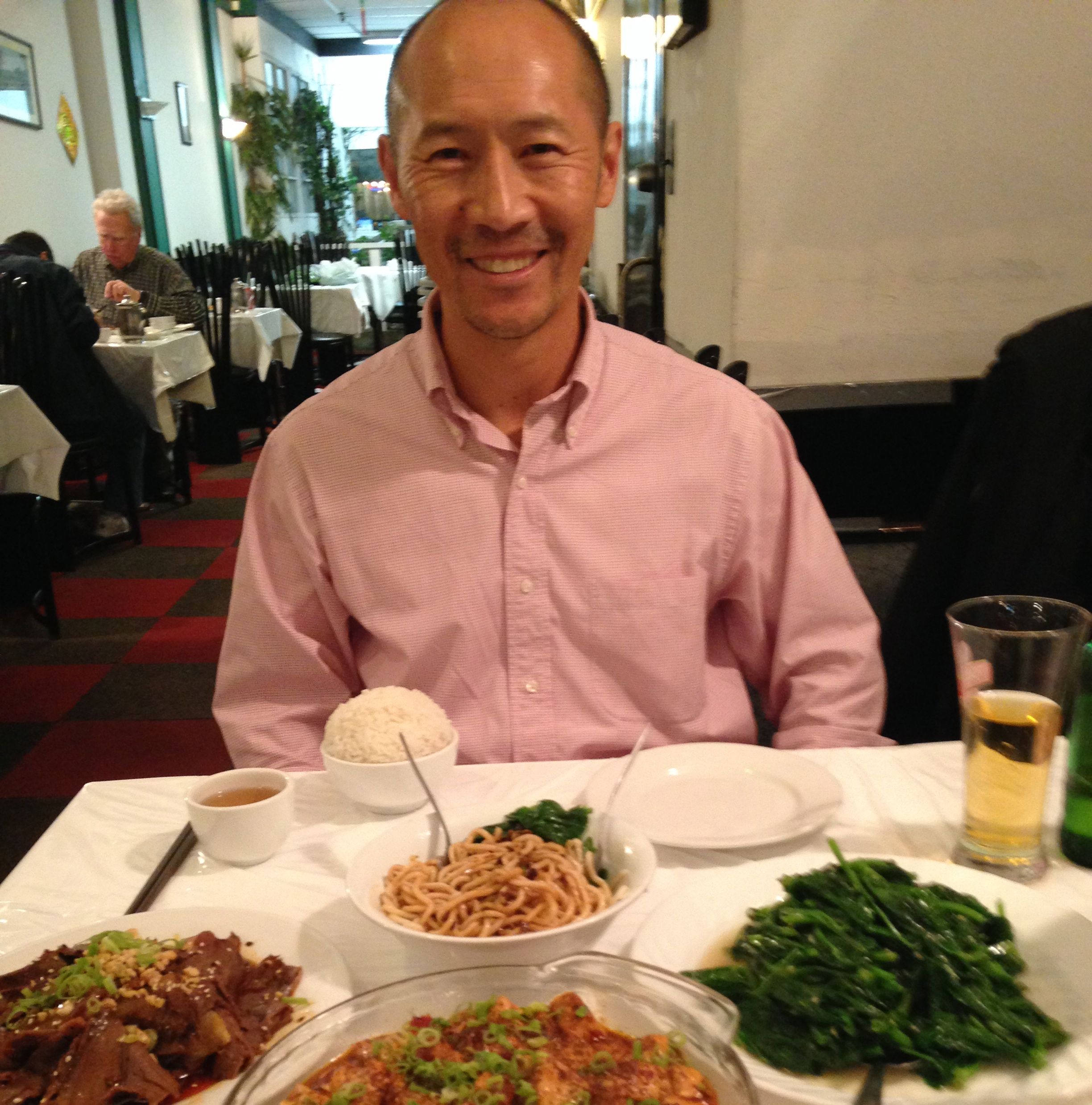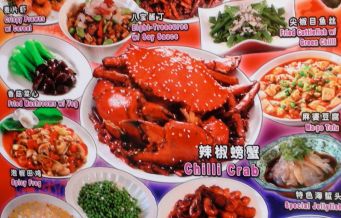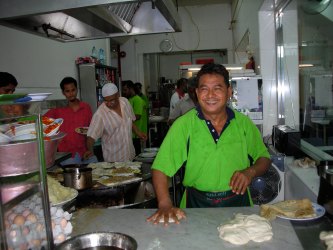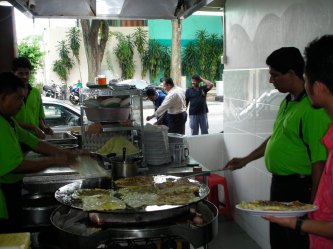My travels always seem to be connected to a business trip. This journey to Singapore was no exception. Singapore is a dynamic city-state that is a harmonious blend of culture, cuisine, arts and architecture. Being very close to the equator, the weather is hot and humid in this island nation, even when I was there in April. And something I could relate to was: Singaporeans are passionate about eating.
In almost every corner of the island, there is an endless variety of food, served hot or cold, at any hour of any day. Many of the dishes in Singapore are influenced by the cultural diversity of other countries, particularly China, India and Malaysia. So it was with this in mind that launched me on my journey of culinary exploration.
One of the dishes I had heard so much about was Hainanese Chicken Rice. It was originally a dish brought over by Chinese immigrants from the southern province of Hainan and adopted into Malaysian and Singapore cuisine – a perfect example of food cross-pollination. Considered one of Singapore’s national dishes, it can be found everywhere – from school canteens and hawker stalls to high-end and chain restaurants. Its appeal crosses all boundaries and is representative of how Singapore’s multiple ethnic groups have come to live in harmony on this small island.
Delicately poached chicken is served atop fragrant and flavorful rice, accompanied by sliced cucumbers and a hot chili dipping sauce. It’s such a simple dish – nothing too exciting to look at, but I can appreciate its mass appeal – stripped down comfort food that’s deeply satisfying.
As I continued through my bucket list of culinary delights, I decided to try Char kway teow, a high-fat hawker favorite. Flat rice noodles stir-fried with lard, dark and light soy sauce, chili, de-shelled cockles, sliced Chinese sausage, bean sprouts, Chinese chives and sometimes prawns and egg.
This dish reminded me of the comforting Cantonese Beef Stirfry with Flat Rice Noodles. As I watched the cook expertly prepare this dish in a wok I was impressed with how quickly it came together. The powerful flames underneath the wok and the cook’s technique of stirring the ingredients lends the dish its “wok hay” or breath of the wok – a unique flavor that can only be achieved by using the round-bottomed traditional style of wok.
Even though many Chinese households now use non-stick flat-bottomed woks for its modern convenience, the spirit of the original design endures as the heart of family life and connects us with two thousand years of history.
A great example of the fusion of cultures is a Chinese and Malay spicy noodle soup called Katong Laksa. Thick or thin rice vermicelli noodles are served in a spicy coconut gravy with bean sprouts, and fish, prawns or chicken. A dizzying combination of flavours and texture that is deeply satisfying. It reminds me of Chinese noodle soup but with the added kick of distinct spices from the Malay and Indonesian cultures – tangy, aromatic, spicy and herbal – a wonderful marriage.
Next on my list is a seafood dish – chili crab – another Singaporean favourite. The locals use a phrase “die, die must try.” Meaty mud crabs are simmered in a sweet, savory and slightly spicy sauce – a blend of tomato, chili paste or sambal and egg.
The dish is rich, luxurious and definitely finger licking good. You can’t be afraid of looking like a messy eater when you enjoy this one! The passionate colour and aromas of this popular dish reflect the Singaporeans’ love of savoury flavours. They aren’t shy about their palate and it shows when you see families dining together with an array of dishes that represent a mosaic of the cultures that make up this country.
Roti parata (flat bread) can also be found in practically every neighborhood in Singapore. Close to my heart, it is an Indian influenced dish.
If you can visit a restaurant where you can watch them being made, it makes for a fascinating show. An oiled ball of dough is kneaded and flattened, then swirled through the air until it becomes an incredibly thin circle of dough. It’s then folded and cooked on the griddle to produce a light and airy snack to be served alongside a vegetable or meat curry.
Dessert versions with chocolate or bananas have also become popular, but my favourite is the savory version – a reminder of my Indian upbringing.
With each flavor and taste that I explored in Singapore, it gave me added insight to the delightful Singaporeans around me. From the fine dining chefs to the hawker stall operator, the penchant for food inspires one to venture in all areas of discovery. And with each taste, you realize that you don’t have any reason to be concerned about 1 star or 5 star establishments. Every food venture is within the standards of the rigid and orderly Singapore experience. Food safety is paramount and important to all vendors, small and large.
So for the adventurous and not so adventurous, dine to your heart’s content and explore the many fascinating flavours of Singapore.
The foods of Singapore reflect harmony of many cultures coming together, each contributing centuries old traditional foods to the table to be shared and enjoyed by everyone. A visit to Singapore is a must – where food is served from the heart.
Namaste


















yum! That dessert looks delicious!
LikeLike
I will order the chicken dish and the flat bread. I am getting hungry again. The photos showing the inside of the restaurant and kitchens gives an interesting insight into food culture.
LikeLike